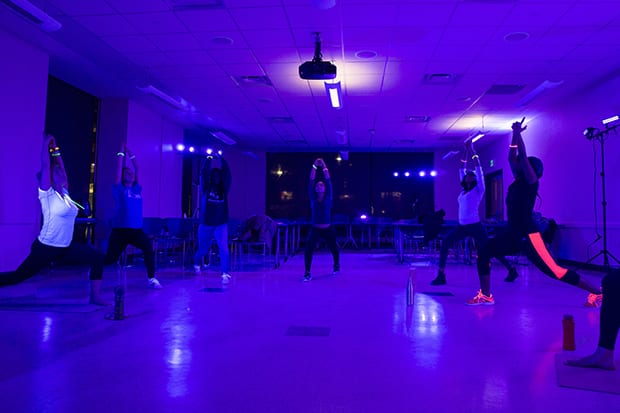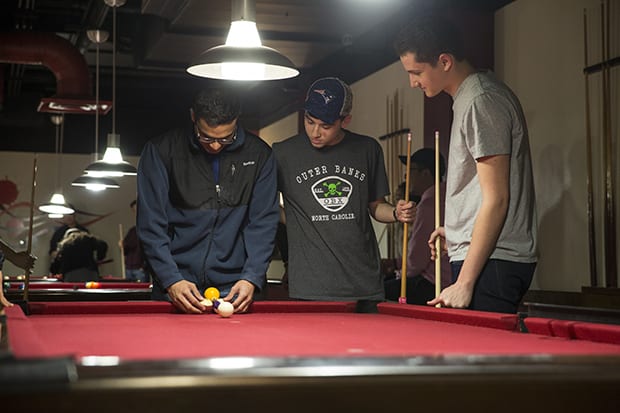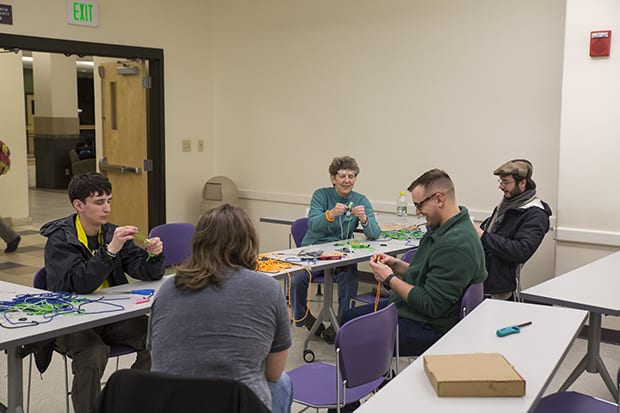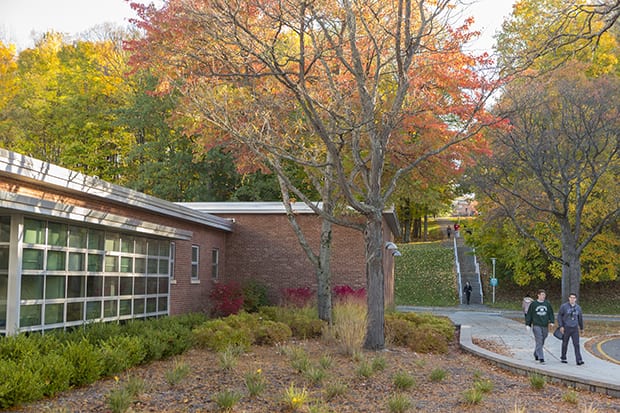Between Club Sports, Intramurals, Outdoor Recreation, Fitness and Wellness, there are numerous segments within campus recreation departments. Sometimes you might forget that you are all working toward the same goal.
Last year the Department of Campus Recreation at Binghamton University decided to come together to work toward a common goal. “It started when our staff was thinking of ways to break down the segments of our department to focus on a collective goal,” said Laura Cichostepski, the assistant director of marketing at Binghamton University. “We came up with a lofty one: Let’s engage 100 percent of the freshman class in a recreational activity, program or event.”
And so the 2020 Initiative was born. “The 2020 Initiative, coined after the graduation year, is a great way to engage new students and encourage a healthy study-life balance,” explained Cichostepski. “In the first year of the initiative, we engaged 84 percent of the freshman class with special events, giveaways and our regular programming.”
Cichostepski and Cindy Cowden, the senior associate director of campus recreation, highlight a few factors that made the 2020 Initiative such a success.
Educate your Campus Population
As Cichostepski explained, many new freshmen are not aware of the programs and services campus recreation provides. It is important to educate them on the various activities they can get involved in, as well as the benefits associated with them. “We promoted the program at orientation so that parents and students could understand the value of recreation within student life,” she said. “We talked to them about the initiative and why we were doing it. As campus recreation professionals, we know the benefits, but it is really important to push those benefits out to the parents and the students.”
Marketing is Everything
Everyone knows that students love free swag, so freshman at Binghamton received a branded class of 2020 penny with the purchase of a campus rec membership. “We also delivered posters to all the freshman halls on campus that focused on the benefits of participating in campus recreation, as well as ways to get involved,” added Cichostepski. “We sent targeted emails encouraging freshman to participate in certain activities. The outdoor pursuits staff led a crafts activity, our group fitness staff led black light Zumba, we had a billiards tournament and a sports-based movie showing.”
Collaborate across Campus
As with any program, you are more likely to be successful and reach a larger population if you form partnerships across campus. “Partner with the resident assistants in freshman halls to encourage participation in programming,” said Cowden. “Partner with other areas on campus like student activities. It should not just be a collaboration between Club Sports and Fitness, but it is a collaboration between Campus Recreation, Residence Life, Student Activities, etc.”
Think Outside the Box
When trying to engage the majority of your campus population it is important to offer unique programming the appeals to a wide variety of demographics. How can you engage the non-users on campus? “We had to think outside of the box,” said Cowden. “For example, our outdoor pursuits staff did a craft activity. When we first started talking about it as a staff everyone didn’t get what that had to do with recreation, but in the end it brought a group of students that were interested in the craft activity to the table with outdoor pursuits staff. They were then able to meet and talk with those students about the programming we had to offer. Then we did a video game tournament which grabbed some students that would traditionally stay in their room. We had to reach outside of our typical programming mindset.”
Track the Data
By the end of the 2020 Initiative, the department had engaged 83 percent of the freshman class in at least one campus rec sponsored activity or program throughout the year. According to Cichostepski, this initiative taught them a lot about the freshman class, that they can use to enhance the program next year.
“We are able to do a better job of targeted marketing now that we know certain things like which residence halls have the highest and lowest participation or what academic majors have higher or lower participation rates. We also want to keep tracking each class. While we are starting the 2021 Initiative in August, we are still going to watch the students in 2020. We are interested in things like: When do the non-users come into play? Will that other 17 percent come into play their sophomore year, as a junior or will they never come in? We also want to look at ongoing participation. Even if they came in as a freshman, do they stay with us? Is there retention in the program?”

















